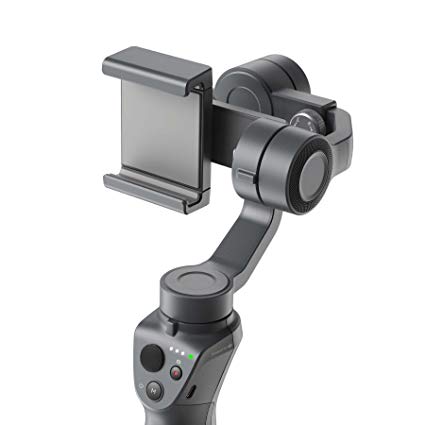
Gimbals have recently made a big splash in the worlds of video and film production, initially with the arrival of camera drones which use gimbals to be able to record video without the image shaking. Gimbals have now evolved into a popular stand-alone product for anyone who wants to record really steady footage. At TheVJ, we often use gimbals to record great footage with smartphones so we thought it would be a good idea to look at how they work and which ones are best for shooting video.
What is a “Gimbal”?
Simply put, a “gimbal” is a mechanism used to control the orientation of something. NASA uses gimbals to control the direction of their rocket engines as well as for stabilizing navigational equipment. Hollywood uses them to move giant pieces of scenery, like in the movie “Titanic” when the ship appears to nose into the ocean before sinking.
Gimbals are also excellent at stabilizing camera movement and as they are relatively inexpensive, they have become an everyday tool in digital filmmaking.
What does a gimbal do?
A camera gimbal keeps a camera steady by removing unwanted movements like shakes or jerking motions, and they can also help keep your shot level.
Simply, the reason you would use a gimbal for handheld shooting is that it smoothes out all your movement.
When shooting with a gimbal, instead of getting bouncy video as you shoot a tracking shoot walking next to your subject, your video looks more like it was shot on a dolly and tracks.
Instead of shaky, blurry, choppy camera moves, a gimbal makes your moves look like the camera is on a boom or even a drone.
How does a gimbal work?
Gimbals use various types of motion sensors that control one or more motors in order to change the orientation of a camera, usually to counteract unwanted movement that can happen when shooting handheld, or from a moving platform.
They do this by turning the camera around three different axis or put simply, tilt, pan, and roll. Tilt is related to elevation, so you tilt the camera down to see the ground and tilt it up to see the sky. Pan refers to moving the camera from side to side, you pan from left to right or right to left. And roll is what makes your picture “roll” over or invert.
So, for example, if you are shooting from a car driving down a rough road, as you bounce up and down, unavoidably moving the camera up and down, the gimbal will tilt the camera in the opposite direction to the bouncing, so when you bounce up the gimbal tilts the camera down, counteracting the unwanted up and down movement.
When should you choose to use a camera gimbal?
The first question to ask yourself is “am I going to be moving the camera?” If the answer to that is “yes”, then you’ll need to think about the types of camera moves you’ll be making.
For instance, if the moves you expect to be making are just pans and tilts without changing location, by walking for instance, then we would say a tripod is probably the better tool for the job. They pan and tilt smoothly and are stable because they are connected to the ground. You usually want to use a gimbal anytime the camera is moving and NOT connected to the ground. For example, if you’re trying to film a chase on foot, where running with the camera will cause an excessive amount of “in camera” movement, or shaky video.
Here at TheVJ we use the Osmo gimbal which costs around $200 and we’ve found it to be a great solution for dealing with the issue of shaky footage.


